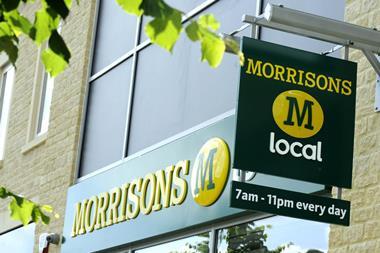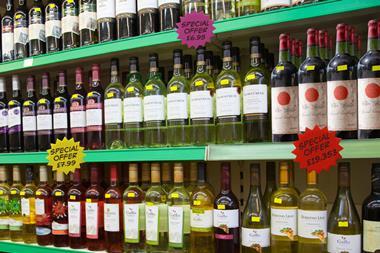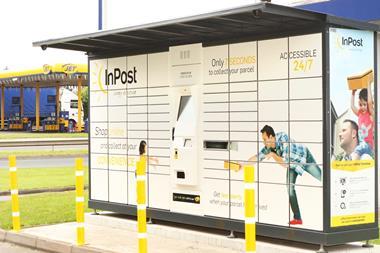Halfway along Station Road in Edgware, Middlesex - between the Izgaru Ocakbasi restaurant and eCosway - is the triple-fronted Greens International Food Centre.
Some 60% of the products in this 5,382 sq ft shop are Polish, Romanian, Lithuanian, Bulgarian and Hungarian - the majority Polish and Romanian. About 25% are Turkish and 15% British.
Hasan Eren, Greens’ manager, proudly points to the ‘24 hours’ sign. Should an expectant woman get pangs for covrigi insiropati (sweet pastry syrup) at 3am, her husband can breathe easy. And for 69p each, these pastries are a steal. Greens is a prime example of how the UK has adapted to immigration over the years, not only in its product mix but in terms of its success: owner Ahmet Eren was poised to open a second store in Haringey as The Grocer went to press. If all goes well, he hopes to open one a year for the next five to 10 years, mostly in Greater London.
Pole positions
Poles make up the second-biggest immigrant population across the UK (second only to Indians) but these figures vary by region, Office for National Statistics (ONS) data shows.
In the South West, East of England, Scotland and Wales, for example, they are the biggest immigrant community and they come in second or third in most individual UK regions.
None of the other Eastern European nations make it into the top five in any region, except for Latvia, which makes number five in the East Midlands. Lithuanians are the fourth-biggest immigrant community in Northern Ireland.
UK population figures for Eastern Europeans - based on the Annual Population Survey/Labour Force Survey, ONS rounded to zero (estimated overseas-born population resident in the UK from January to December 2013) - are:
Polish: 670,000
Lithuanians: 142,000
Romanians: 130,000
Latvians: 81,000
Slovakians: 51,000
Bulgarians: 50,000
Russians: 49,000
Czech Republic: 46,000
Ukrainians: 26,000
The above figures need to be treated with a certain amount of caution, however. They exclude, for example, students in halls who do not have a UK resident population and those living in hotels, boarding houses, hostels and mobile home sites.
Community sources say, unofficially, the figures are substantially higher, with estimates of well over a million Poles. ONS quarterly migration statistics published this August note that 28,000 Romanian and Bulgarian citizens moved to the UK in the year ending March 2014, a statistically significant increase from 12,000 in the previous 12 months.
The ONS has, in the past, admitted “an underestimate” of the number of immigrants from the countries of central and Eastern Europe that joined the EU in 2004.
And Migration Watch UK says it is difficult to estimate the true extent of net immigration from Eastern Europe since their accession.
It says future inflows will depend on the relative economic levels of the UK and Eastern European economies, unemployment levels, demographics and the policy of other EU countries towards admitting Eastern European workers.
With the influx the UK has experienced from Eastern Europe since 2004 - among them Polish, Romanians, Lithuanians and Latvians - Dawtona Tomato Puree, Kucharek stocks and seasonings, Kwidzyn Chrzan Tarty (that’s grated horseradish with citric acid, to the uninitiated) and Lubella Barley Groats, can not only be found in specialist stores, they have secured prized space on mainstream supermarket shelves, too.
The specialists operate under names such as Polski Sklep, Kubus, Polanka, Orzel, Poziomka, Sarmata Deli, Polskie Delikatesy and Morawski Delicatessen. These names do not trip easily off British tongues, however. Some, trying to widen their appeal, have adopted English names. As well as the aforementioned Greens, there’s In & Out Supermarket, and Eagle Delicatessen - both in Ealing, West London.
Market sizing
But how big is the Eastern European grocery retail market in the UK? And what’s the size of the prize?
Official population figures (see right) put the Eastern European population at about 1.25 million, but are believed to significantly underestimate the true number of Eastern Europeans in the UK because of the way the figures are compiled.
Published market research on the number of ethnic shops in this category is also unreliable. The Local Shop Report from the Association of Convenience Stores, published last month, places Eastern European retailers anonymously in the ‘other’ category for ethnicity of owners. It says ‘any other white background’ makes up 1.8% of the 3% ‘other’ non-British category [in its report], which would include operators from Eastern Europe.” However, it is unlikely the data used picks up all new Eastern European operators. And a person’s ethnicity does not necessarily indicate they specialise in that country’s products. At Greens, for example, owner Eren is Turkish.
Specialist wholesalers and distributors, of which there are about 10 in the UK, are the only ones able to make any sensible stab at market size. However, even these vary considerably.
Ibrahim Yucesoy, MD of wholesaler Dimark, which distributes Polish and Eastern European food and drink, estimates the number of specialist Eastern European stores in the UK run to 5,000 - with about 3,000 to 4,000 of them concentrated in the capital.
Little Poland
A large percentage of these - in keeping with population trends - are Polish. Maciej Skarbonkiewicz, MD of wholesaler Polish Food Products, estimates 450 to 500 stores in the UK have Polish names on the door and focus mainly on Polish consumers - about 150 of them in London. Most are single-store entities. About 20% of operators in the city have two or more outlets, he calculates, and none have more than 10. Only 15% have two or more outlets in the UK overall, he adds.
Outside London, the biggest concentrations are in Oxford, Cambridge, Peterborough, Coventry, Birmingham, Swansea, Cardiff, Plymouth, Manchester, Liverpool, Leeds, Edinburgh, Glasgow and Belfast. There’s also Boston, in Lincolnshire, which is nicknamed ‘Little Poland’, and Ipswich and Norwich, which are popular with Lithuanians.
If Skarbonkiewicz’s estimates sound conservative, it’s still a dramatic change from the picture when Poland joined the EU. “In 2004, in the whole of London we calculated a maximum of 25 Polish shops in a few boroughs like Hammersmith, Ealing and Camden.”
“Almost all our products now have English descriptions and, if not, we put a sticker on”
Skarbonkiewicz’s estimates also do not include the huge number of stores that sell Polish products under an anglicised fascia, or carry a mixed range. As well as Greens, Baltic Branch, for example, has three stores selling Lithuanian, Polish and Latvian Food in Ramsgate, Margate and Dover.
As new waves of immigrants move to the UK, the market is also evolving. Lithuanian specialist Lituanica is among the largest Eastern European chains with nine outlets - four in London, and one apiece in Bedford, Birmingham, Gravesend, Ipswich and King’s Lynn. The Grocer made multiple attempts to contact Lituanica but failed to get a response to requests for an interview and efforts to engage with the group on social media also drew a blank.
Case study: Greens International
Name: Greens International Food Centre
Address: Station Road, Edgware, Middlesex
Size: 5,382 sq ft gross
Opened: 2010
Owner: Ahmet Eren
Product lines: 1,000-1,200
Product mix: 60% Polish and Romanian, with a mixture of Lithuanian, Bulgarian and Hungarian within that; 25% Turkish, 15% UK
Pricing: Competitive with special offers and ongoing promotions, such as Nescafé instant coffee 100g for £2.99 plus free 1kg of white sugar
Strengths: varied, strong display of products with shelves that are always full; good-quality chilling and freezing equipment and shelving units; eco-friendly lighting; triple-frontage window display: fresh fruit & veg delivered daily in the shop rather than in front so remains uncontaminated from the cigarette smoke from the bus stops outside; strong dairy and deli section; strong on coffee and tea; products that are unavailable in the major multiples; strong bakery department
Turnover: £55,000 a week
Net margin: 12%
Future: Plans to create a chain, with Haringey imminent and then one a year, mostly in London
The past two years have also seen a growing number of Romanian shops - estimates are of up to 40, of which most are single stores. Yucesoy says Barnet is home to about a third of them.
Hungarian and Bulgarian shops have also started to appear in the past two years, though there are thought to be only about 10 of these in London.
Hungarian stores include Paprika Stores in Green Lanes, North London, Tatranky in Corby, Northamptonshire and Roswitha’s Delicatessen in Bradford, West Yorkshire.
Bulgarian operators include Bulgaria Food, in Croydon, Surrey, Sofia, in Queensway, West London, and Kasmetcheto, in Acton, west London.
General retailers
It’s not just specialists that are muscling in, either. Yucesoy notes that “there are a lot of general independents and multiples who carry Eastern European range.” Dimark’s customers, for example, include Nisa, Musgrave, One Stop and Palmer & Harvey. “All these people understand there is demand for these products not just from Eastern Europeans but from the general UK market,” he claims.
Indeed, Yucesoy estimates 70% of stores in the UK are stocking Eastern European lines, if only to a small extent. “The only people who are not are the likes of M&S and Waitrose. Even Ocado has started showing interest,” he says.
But although the major multiples sell a selection of Polish lines, they have not got this market right, Skarbonkiewicz says. “The ‘ethnic shelf’ of the UK supermarkets is too short and narrow,” he reckons. “Poles like to spend on good food and drink, including vodkas and beers, so the supermarkets are missing out on millions of pounds of profit from them.”
Tesco’s range is “poor and messy”, Asda has “improved” with its ‘Delicja’ counters. Sainsbury’s is “most advanced” but still with room for improvement, while Morrisons is just starting to look more into the sector. The problem is supermarket buyers do not have deep enough knowledge of Eastern European products, he adds.
On the whole, most of the Eastern European stores have prospered by appealing to their own nationals, tending to be insular rather than widening their net to attract the general population. The question is: could Eastern European products and brands be embraced by the indigenous population, as has been the case with previous ethnic and Mediterranean population influxes? In the case of the Polish beer brand Tyskie, it already has, to some extent. But retail expert Richard Hyman thinks Eastern European food will take time to be adopted, and points to a communication issue. “If they want to start accessing the general market, they need to really want to touch the general market. The fundamental element of that is communication and therefore language.
“I think if you look at the Asian community and the extent to which Indian-style food has become such a staple in the British diet, it helps that the Indian subcontinent has a British colonial past. But the packaging is in English and it is on a scale where the bulk of Indian-style product consumed in Britain is made here.”
Irina Tveritina, a book keeper at Baltic Branch, tells The Grocer the business aims to attract Eastern Europeans, though “we welcome everyone”. Baltic Branch goes a lot further than many in that “we try to put labels underneath on the shelf to try to explain what the products are.” The most popular are sour cream, spices and bread, she adds.
But with many of the Eastern European products still having the original packaging and labelling. Yucesoy spots an opportunity. “This is where we play an important part as wholesalers. We are changing all of that. And we are trying to get as many retailers as possible to buy from us, because we have direct contracts with the manufacturers so we can get the product repackaged with the English on.”
This is vital, he says, because if a consumer goes in and doesn’t know what the product is, even if they think it looks good, they are sometimes put off,” he says. “Good wholesalers like us are trying to change that and take these products to mass market. And it’s slowly working.”
Greens has written to all its suppliers explaining the need to have English on the packaging. “In the first seven or eight months we had assistants from Poland, turkey and Romania explaining to customers what the products were,” says Eren. “Almost all our products now have English descriptions and, if not, we put a sticker on. The council demands this in any case.”
Shopkeeping
In terms of shopkeeping standards, Ibrahim Yucesoy says Eastern Europeans, and even Asian operators, are not as good as Turkish retailers, who invest more in their stores and go the extra mile to get what customers want.
The Eastern European specialists also struggle with lack of buying clout and relatively small orders, which makes it expensive to secure supplies and therefore good margins. And many admit staff need to be more educated in the retail trade. Eren was in textiles before opening in 2010, but learned the trade from the ground up, attending Nisa and Bestway seminars on food hygiene.
Anti-immigration rhetoric from all political parties in the wake of UKIP’s increasing popularity could also impact on the evolution of the market.
“I can’t see anyone else coming in because there’s a very negative attitude to immigration,” says Yucesoy. “When the borders opened it was good for the economy and the businesses concerned and probably even other retailers and the big multiples.”
Hyman says that with Polish and other Eastern European communities there is a big enough population for them to have built “reasonably meaningful self-serving self-sufficient businesses” in which the economics work. “How far beyond that they are going to go remains to be seen. We have had remarkable population growth in Britain - it may be that in the coming years the population will flatten out a bit.”
But history shows that once a minority immigrant population reaches critical mass, he adds, “all sorts of targeted consumer goods tend to follow.”



















No comments yet